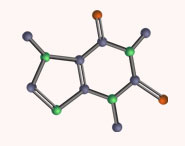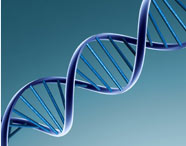


 علم الكيمياء
علم الكيمياء 
 الكيمياء التحليلية
الكيمياء التحليلية 
 الكيمياء الحياتية
الكيمياء الحياتية 
 الكيمياء العضوية
الكيمياء العضوية 
 الكيمياء الفيزيائية
الكيمياء الفيزيائية
 الكيمياء اللاعضوية
الكيمياء اللاعضوية 
 مواضيع اخرى في الكيمياء
مواضيع اخرى في الكيمياء
 الكيمياء الصناعية
الكيمياء الصناعية | Delocalization over three atoms is a common structural feature The carboxylate anion |
|
|
|
أقرأ أيضاً
التاريخ: 28-7-2018
التاريخ: 14-2-2017
التاريخ: 6-6-2016
التاريخ: 28-7-2018
|
You may already be familiar with one anion very much like the allyl anion—the carboxy late ion, which forms when a carboxylic acid reacts with a base. In this structure we again have a negatively charged atom separated from a double bond by a single bond adjacent to a single bond: it’s analogous to an allyl anion with oxygen atoms replacing two of the carbon atoms.
X-ray crystallography shows both carbon–oxygen bond lengths in this anion to be the same (136 pm), in between that of a normal carbon–oxygen double bond (123 pm) and single bond (143 pm). The negative charge is spread out equally over the two oxygen atoms, and we can represent this in two ways—as before, the one on the left shows the equivalence of the two C–O bonds, but you would use the one on the right for writing mechanisms. The delocalization arrow tells us that both localized forms contribute to the real structure.



|
|
|
|
مقاومة الأنسولين.. أعراض خفية ومضاعفات خطيرة
|
|
|
|
|
|
|
أمل جديد في علاج ألزهايمر.. اكتشاف إنزيم جديد يساهم في التدهور المعرفي ؟
|
|
|
|
|
|
|
العتبة العباسية المقدسة تنظّم دورةً حول آليّات الذكاء الاصطناعي لملاكاتها
|
|
|